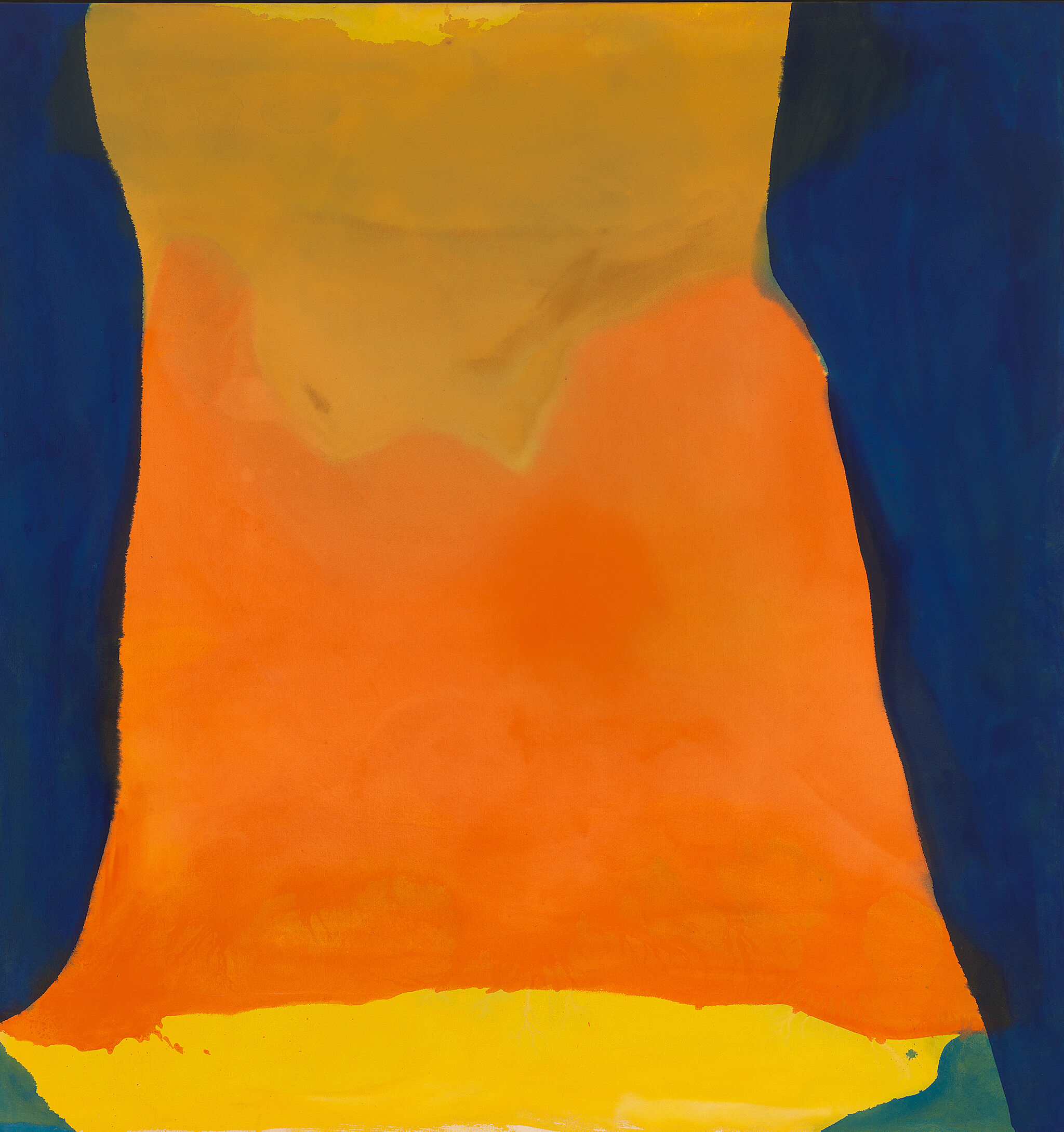Spilling Over: Painting Color in the 1960s | Art & Artists
Mar 29–Aug 18, 2019
Spilling Over: Painting Color in the 1960s | Art & Artists
Helen Frankenthaler
5
In Orange Mood, Helen Frankenthaler thinned acrylic paint to the consistency of watercolor in order to create large, curving expanses of color through which the weave of the canvas remains visible. Like Jackson Pollock, she placed her canvas directly on the floor and poured paint from above, largely without the aid of a brush. Frankenthaler used color as her painterly language, but she never entirely abandoned representation. Although the references can be subtle, her paintings consistently evoke nature. The undulating forms in Orange Mood relate to a simplified landscape, with zones of color recalling different emotional states. Hue and shape convey place and feeling. “I think of my pictures as explosive landscapes, worlds and distances, held on a flat surface,” Frankenthaler once stated.

